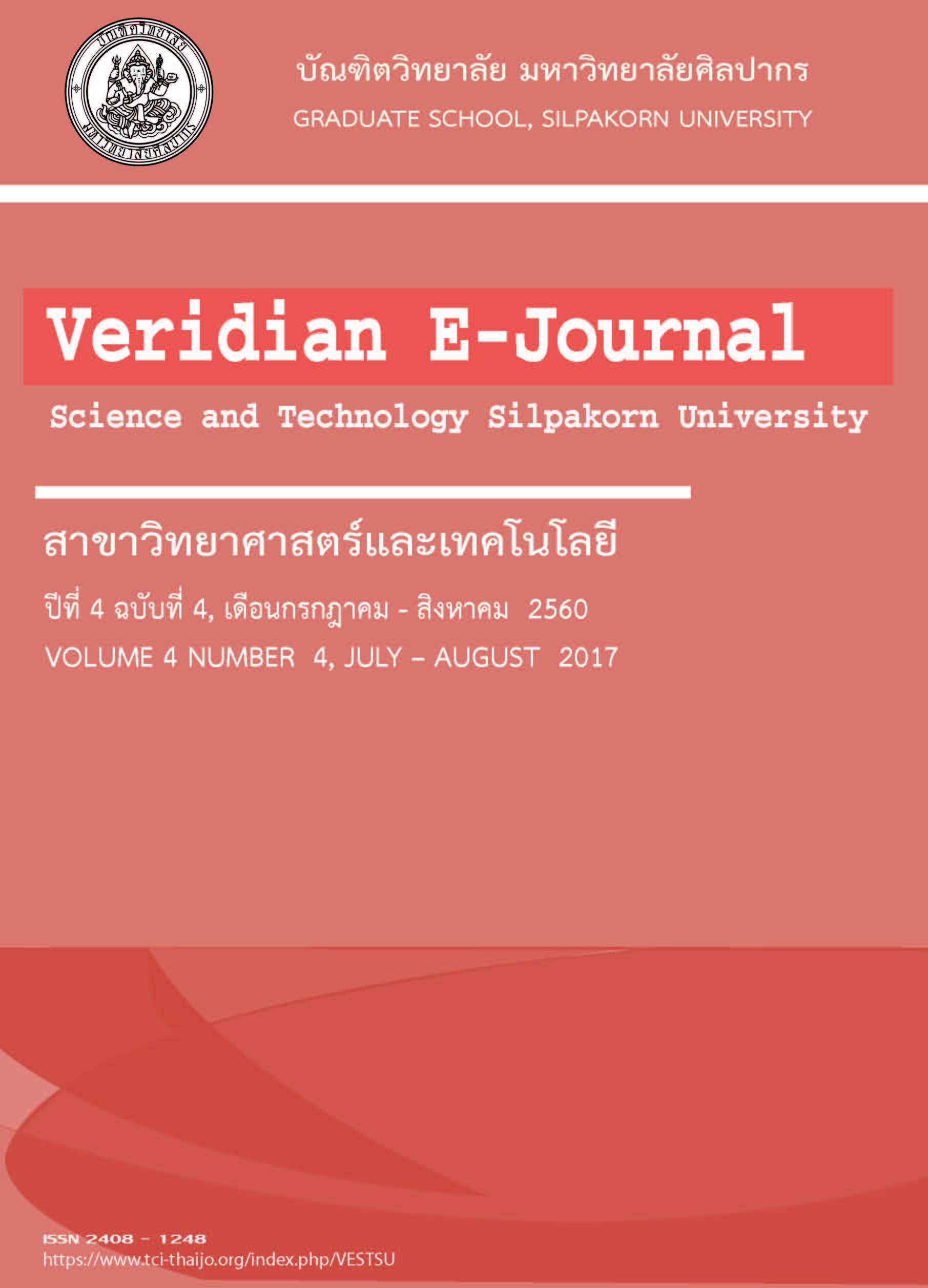การศึกษาสภาวะที่เหมาะสมในการเพาะเลี้ยงสาหร่ายสีเขียวขนาดเล็กในน้ำทิ้งฟาร์มสุกร และการผลิตน้ำมันจากสาหร่าย (The study of optimum conditions for microalgae culture in piggery wastewater and algae oil production)
Main Article Content
Abstract
การศึกษาสภาวะที่เหมาะสมในการเพาะเลี้ยงสาหร่ายสีเขียวขนาดเล็กในน้ำทิ้งฟาร์มสุกร และการผลิตน้ำมันจากสาหร่าย มีวัตถุประสงค์เพื่อศึกษาสภาวะที่เหมาะสมในการเพาะเลี้ยงสาหร่ายขนาดเล็ก ศึกษาคุณภาพน้ำทิ้งฟาร์มสุกรหลังการเพาะเลี้ยงสาหร่ายขนาดเล็ก และเพื่อศึกษาปริมาณชีวมวลและน้ำมันที่สกัดได้จากสาหร่ายขนาดเล็ก ผลการศึกษาพบว่าสาหร่ายสามารถเจริญเติบโตได้สูงสุดคือ 83×104 เซลล์ต่อมิลลิลิตร เมื่อเพาะเลี้ยงในน้ำทิ้งที่ความเข้มข้น 20 เปอร์เซ็นต์ คุณภาพน้ำทิ้งหลังการเพาะเลี้ยงเป็นระยะเวลา 15 วัน พบว่า ค่าความเป็นกรดด่าง (pH ) เป็นกลาง อยู่ในช่วง 7.99-8.98 ค่าการนำไฟฟ้า (EC), ค่าของแข็งทั้งหมด (TSS), ของแข็งแขวนลอยทั้งหมด (TDS), ค่าไนโตรเจนทั้งหมด (TN), และค่าฟอสฟอรัสทั้งหมด (TP) มีค่าลดลง 31.08-32.56 เปอร์เซ็นต์, 51.61-92.51 เปอร์เซ็นต์, 28.98-34.43 เปอร์เซ็นต์, 35.16-67.25 เปอร์เซ็นต์ และ 15.00-72.14 เปอร์เซ็นต์ ตามลำดับ ผลการผลิตชีวมวลสาหร่ายสูงสุดคือ 3.382 กรัมและการผลิตน้ำมันสูงสุด คือ 0.0114 มิลลิลิตรที่ความเข้มข้น 100 เปอร์เซ็นต์ และ 80 เปอร์เซ็นต์ จากการศึกษาดังกล่าวแสดงให้เห็นว่าการเพาะเลี้ยงสาหร่ายสายพันธุ์ Chlorella vulgaris ด้วยน้ำทิ้งฟาร์มสุกรมีศักยภาพที่จะนำไปสกัดน้ำมันและใช้เป็นพลังงานทางเลือกต่อไปในอนาคต
This research was to study the optimum conditions for microalgae culture in piggery wastewater and algae oil production. The aims of this study were to determine an optimum conditions of piggery wastewater for algal cultivation, reveal water quality after algal cultivation and quantify the biomass and oil production. The study showed that the highest growth of microalgal Chlorella vulgaris was obtained in the 20% concentration culture were the highest, correspondingly up to 83×104 cells/ml. The pH in the cultivation period was 7.99 to 8.98, whil, electrical conductivity (EC), total suspended solids (TSS), total dissolved solids (TDS), total Nitrogen (TN) and total Phosphorus (TP) removal ranged from 31.08% to 32.56%, from 52.60% to 92.51%, from 28.98% to 34.43% and from 35.16% to 67.25%, 15.00-72.14 respectively after 15 days of treatment. The highest biomass productivity was 3.38 g and the highest oil productivity was 0.0114 ml when cultivating Chlorella vulgaris in the 100% and 80% concentration culture. This study showed that simultaneous productions of biofuel, bioelectricity and wastewater treatment were possible by Chlorella vulgaris.

